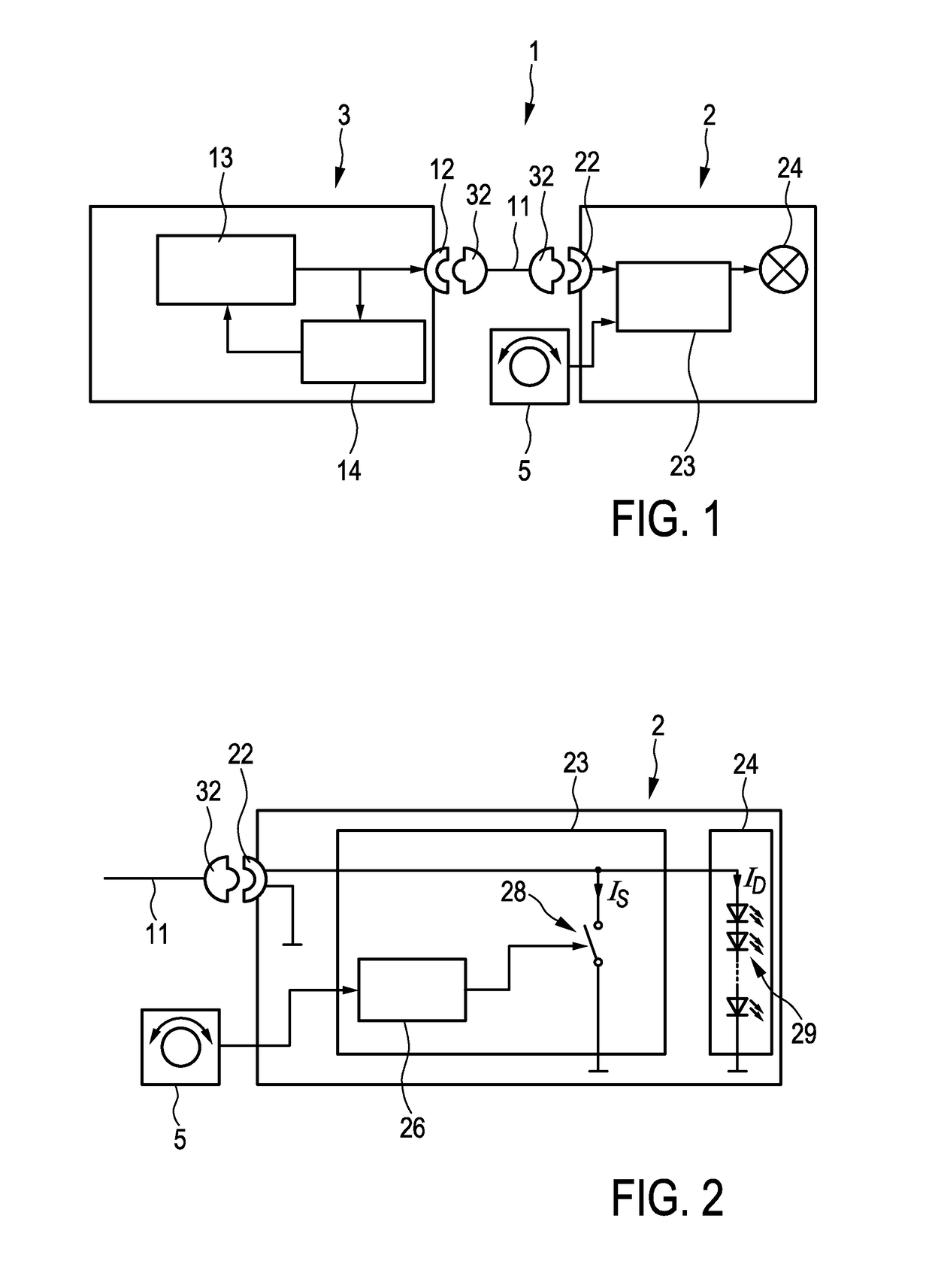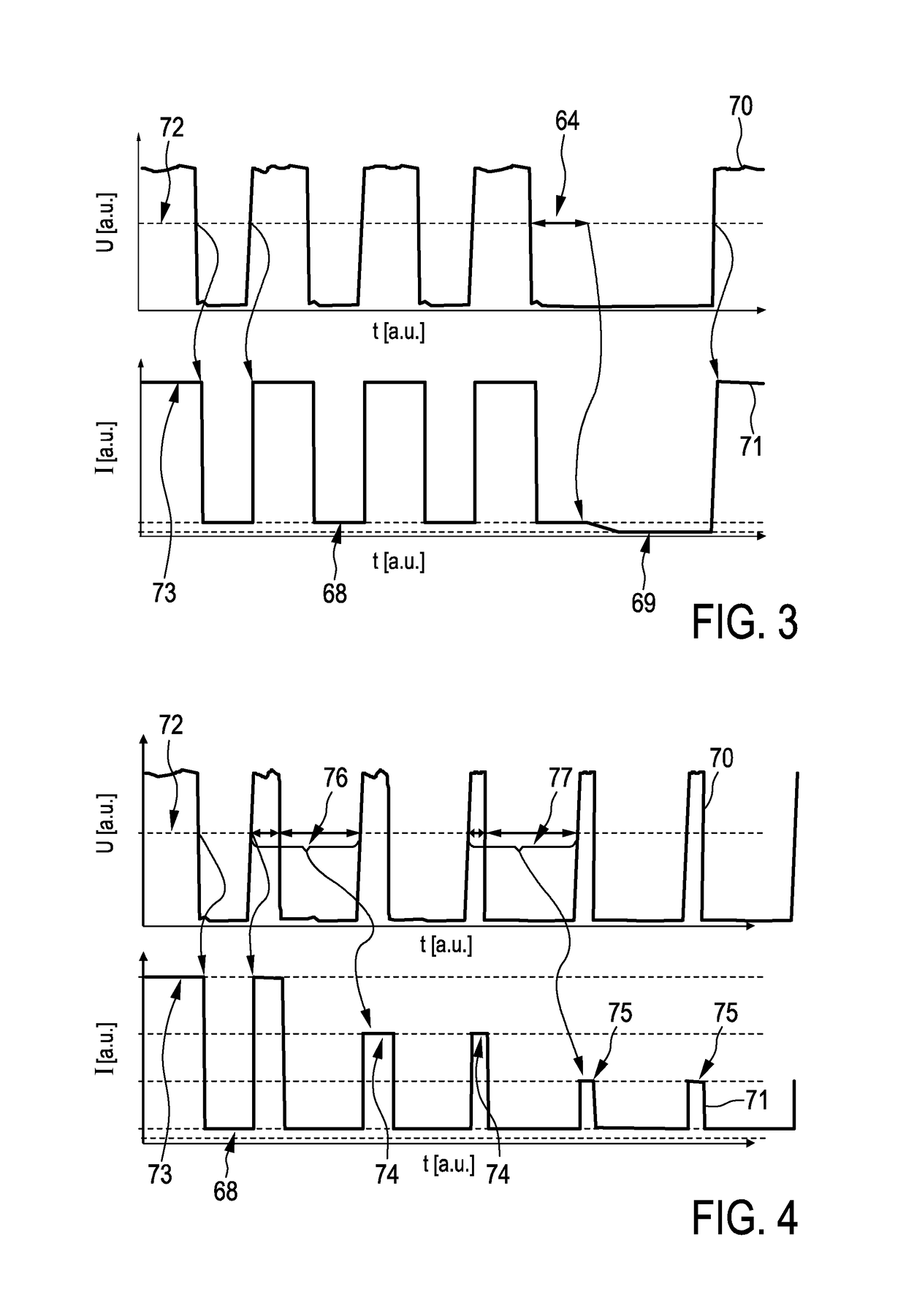Power supply device
a power supply device and power supply technology, applied in the direction of electric variable regulation, process and machine control, instruments, etc., can solve the problems of reducing the efficiency of distributing power in the power distribution system, and achieve the effect of improving the efficiency of distributing power
- Summary
- Abstract
- Description
- Claims
- Application Information
AI Technical Summary
Benefits of technology
Problems solved by technology
Method used
Image
Examples
Embodiment Construction
[0031]FIG. 1 shows schematically and exemplarily an embodiment of a power distribution system for distributing power from a power supply device 3 to an electrical consumer 2. In this power distribution system 1 the power supply device 3 and the electrical consumer 2 are electrically connected via a Cat 5 cable 11, which is coupled to the power supply device 3 and the electrical consumer 2 by using electrical connectors 12, 32, 22. The power distribution system 1 is adapted to distribute DC power, wherein the power supply device is output current controlled.
[0032]The power consumed by the electrical consumer 2 is variable by using a pulse-width modulated shunt circuit 23, wherein the PWM, i.e. the duty cycle of the PWM, is controllable by a user via a user control unit 5. In this embodiment, the electrical consumer 2 is a lamp comprising the user control unit 5, the pulse-width modulated shunt circuit 23 and a light source 24, wherein the user control unit 5 and the pulse-width modul...
PUM
 Login to View More
Login to View More Abstract
Description
Claims
Application Information
 Login to View More
Login to View More - R&D
- Intellectual Property
- Life Sciences
- Materials
- Tech Scout
- Unparalleled Data Quality
- Higher Quality Content
- 60% Fewer Hallucinations
Browse by: Latest US Patents, China's latest patents, Technical Efficacy Thesaurus, Application Domain, Technology Topic, Popular Technical Reports.
© 2025 PatSnap. All rights reserved.Legal|Privacy policy|Modern Slavery Act Transparency Statement|Sitemap|About US| Contact US: help@patsnap.com



